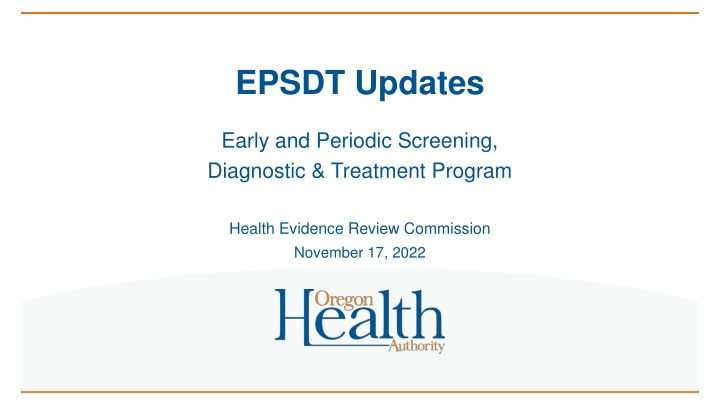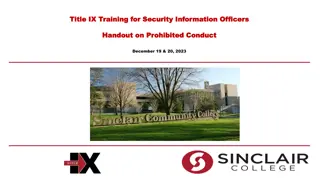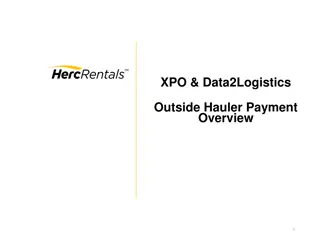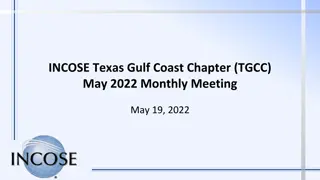
EPSDT Updates and Requirements in Oregon
Learn about the Early and Periodic Screening, Diagnostic, and Treatment (EPSDT) program in Oregon, including upcoming changes in 2023. Find out how EPSDT provides comprehensive healthcare services for children and youth under 21, and understand key guidelines for coverage and denials by CCOs and OHA.
Download Presentation

Please find below an Image/Link to download the presentation.
The content on the website is provided AS IS for your information and personal use only. It may not be sold, licensed, or shared on other websites without obtaining consent from the author. If you encounter any issues during the download, it is possible that the publisher has removed the file from their server.
You are allowed to download the files provided on this website for personal or commercial use, subject to the condition that they are used lawfully. All files are the property of their respective owners.
The content on the website is provided AS IS for your information and personal use only. It may not be sold, licensed, or shared on other websites without obtaining consent from the author.
E N D
Presentation Transcript
EPSDT Updates Early and Periodic Screening, Diagnostic & Treatment Program Health Evidence Review Commission November 17, 2022 HEALTH POLICY AND ANALYTICS DIVISION
Refresher: What is EPSDT? The Early and Periodic Screening, Diagnostic and Treatment (EPSDT) benefit provides comprehensive and preventive health care services for Medicaid-enrolled children and youth under age 21. In Oregon, EPSDT constitutes the child and youth benefit within the Oregon Health Plan. 2
What is changing January 1, 2023? No EPSDT requirements will be waived in Oregon. Under EPSDT, OHP covers any medically necessary and medically appropriate services for enrolled children and youth until their 21st birthday, regardless of: The location of the diagnosis on the Prioritized List of Health Services Whether it pairs, or is a non-pairing service Whether it is a non-covered ancillary service. Whether it is covered under the State Plan 3
Updates to CCO and OHA guidance Reviews for medical necessity and medical appropriateness of previously non-covered services must occur prior to a denial of coverage. Regardless of the Prioritized List, CCOs and OHA must cover any medically necessary and medically appropriate service for enrolled children and youth until their 21st birthday. Pharmaceutical reviews for coverage will be aligned with the requirements for individual review of medical necessity and medical appropriateness as required The following language is being added to the Prior Authorization Request for Medications and Oral Nutritional Supplements (OHP 3978), effective January 1, 2023: List all applicable diagnosis codes or contributing factors causing or exacerbating a funded condition, including any relevant comorbid conditions or impacts on growth, learning or development. The addition of this language is intended to help facilitate individual reviews. 4
Dos and donts under EPSDT CCOs and OHA cannot: Deny a service or claim solely because it is below the funding line, non-pairing, or a historically non- covered ancillary service. This includes automatic denial by claims processing systems of services that have historically not been covered. CCOs and OHA can: Deny a claim for administrative errors such as incorrect entries of diagnostic codes and other incorrectly entered factual information without first conducting an individual review for medical necessity and medical appropriateness. Deny a service or claim if it is not medically necessary and medically appropriate (or dentally appropriate, for a dental service) for the child/youth, based on individual review of clinical documentation. Choose to automatically approve previously not covered services without a review for medical necessity. Use the Prioritized List as a guidance tool and not a denial tool. 5
The Prioritized List under EPSDT Under EPSDT, CCOs and OHA must cover all medically necessary and appropriate (or dentally appropriate, in the case of a dental service) services for children and youth under age 21. The HERC continues to review clinical evidence and update the Prioritized List. The List remains a guidance tool for identifying services that may require documentation to establish medical necessity and medical appropriateness (or dentally appropriateness) for members under 21. The Health Evidence Review Commission has recently completed review of historically non-covered services with the unique needs of children and youth in mind to minimize the need for individual reviews prior to approval of services. 6
Utilization management OHA is working to develop guidance for which EPSDT services may require prior authorization This guidance will be released after the forthcoming EPSDT CCO guidance document. Prior authorization must be conducted on a case-by-case basis, evaluating each child s needs individually. Prior authorization procedures may not delay delivery of needed treatment services and must be consistent with the preventive intent of EPSDT. Prior authorization may not be required for any EPSDT screening services. 7
Utilization management States may impose utilization controls to safeguard against unnecessary use of care and services. For example: States may establish limits on the number of treatment services a child may receive and require prior authorization for coverage of medically necessary services above those limits. States may require prior authorization on specific services, e.g. for certain diagnostics and medications. 8
Compliance with Federal EPSDT requirements Oregon DOJ advises, and Federal guidance supports, that review of historically non-covered services prior to denial is required by the Federal EPSDT program. All services for children must be approved or reviewed individually for medical necessity and medical appropriateness prior to denial, except for claims with clerical errors such as incorrect entries of diagnostic codes and other incorrectly entered factual information. 9
Compliance with Federal EPSDT requirements Oregon is the only state that has ever had a waiver related to EPSDT and is the only state with a Prioritized List. From CMS 1115 Waiver approval letter (September 2022): Covering EPSDT services for children ages birth to the age of 21 will bring Oregon into compliance with Title XIX, which will increase member access to the full breadth of preventative, dental, mental health, developmental, and specialty services for children and youth in the state. Other states systems and processes for approving or denying EPSDT services rely upon individual review for medical necessity and medical appropriateness to comply with the Federal EPSDT program. 10
Pathway to implementation These requirements are effective January 1, 2023. Full implementation is expected by the end of Q1 2023. Quality & process improvement Future work 11
Guidance is being finalized A draft guidance document for CCOs was provided on September 27th OHA is incorporating and addressing feedback and questions received from the CCOs Final guidance document will be posted and disseminated in advance of the CCO Contracts & Compliance Workgroup on November 22nd Guidance for providers is being finalized and will be posted and disseminated in early December 2022. 12
Communications: Updates and Dialogue EPSDT presentations: CCO Operations Collaborative November 8th QHOC November 14th and December 12th VBBS & HERC November 17th CCO Contracts & Compliance Meeting November 22nd Final CCO guidance document will be provided in advance of this meeting 13
OHA now has an EPSDT webpage www.oregon.gov/EPSDT All guidance documents and EPSDT communication materials will be available on this page. 14
EPSDT Regulations Oregon Administrative Rule 410-130-0245 Early and Periodic Screening, Diagnostic and Treatment Program Code of Federal Regulations 42 CFR 441 Subpart B Early and Periodic Screening, Diagnostic and Treatment (EPSDT) of Individuals Under Age 21 15
Federal EPSDT Guidance & Policy Resources EPSDT - A Guide for States: Coverage in the Medicaid Benefit for Children and Adolescents Medicaid.gov Health Resources & Service Administration Maternal & Child Health Bureau Medicaid and CHIP Payment and Access Commission 16 16 16 16
Questions? EPSDT.Info@odhsoha.oregon.gov Dialogue with collaborators and partners, including families and members, helps us center equity. Thank you for your ongoing participation, and for providing us with the partnership and insights that help us better serve Oregon s communities. Thank you. 17








